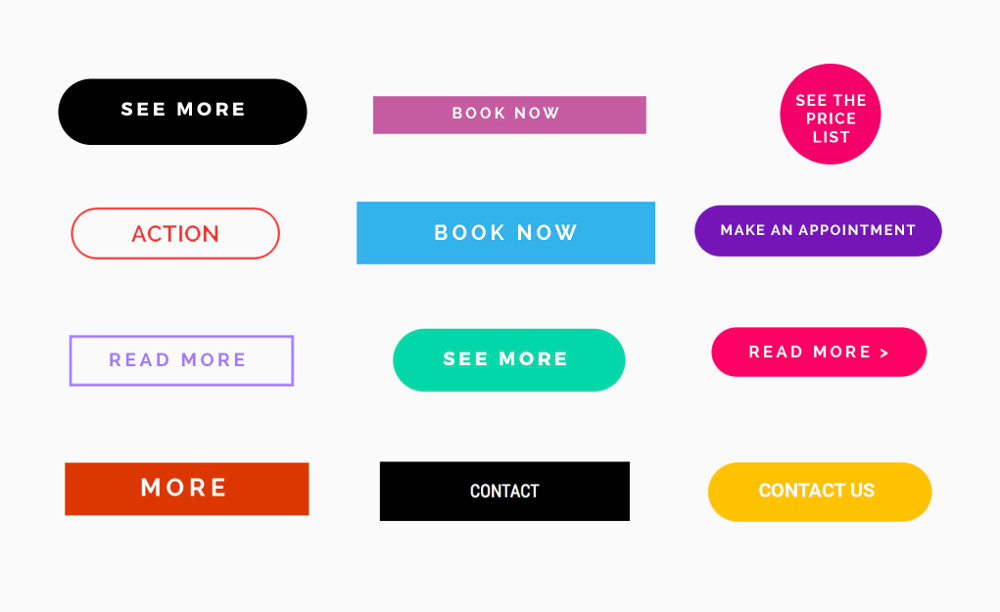That’s where the hub and spoke model of content marketing comes into play.
This strategy is at the intersection of what your business needs to survive and what your visitors want when they land on your pages.
The perfect storm.
I’ll break down what the hub and spoke model is, why it’s so important (and effective) right now, and how to build one for your website.
What is The Hub and Spoke Model?
The hub and spoke model in content marketing is a framework that allows you to create topical relevance. It allows you to better organize your content, and lead visitors through every stage of the buyer’s journey. It accomplishes this with larger overview pages (the hub) about specific topics which then link to pages where aspects of the topic are explored in-depth (the spokes).
For example, a business could create a hub page that focuses on email marketing. The hub page would summarize the major aspects of the topic such as segmentation, subject lines, email newsletter design, re-engagement campaigns, etc. For each supporting topic or subsection, it would link to another page that goes into further detail on it.
As the business produces more content related to the content hub, it establishes authority on the subject. Search engines take note of this topical relevance and it becomes easier for the business to rank for relevant keywords.
Your visitors are also able to get all the information they need on the subject while moving through the buyer’s journey.
Why the Hub and Spoke model is more relevant than ever
In a single sentence: because social media are not as organic anymore.
To add to this point, every business has a blog and they’re putting out content on a regular basis. In the WordPress network alone, 70 million blog posts are published every month. That doesn’t include other platforms like Wix, Shopify, Weebly, etc.
This leads to a simple supply and demand problem. There’s more content than there are people to consume it. It becomes a fight for attention. A war for discoverability.
Creating a social media content strategy isn’t as easy as it used to be. The organic Facebook reach was throttled years ago and the average lifespan of a Tweet is 20 minutes. If people don’t see what you post right when you post it, then it’s pretty much game over.
This is where the hub and spoke model shines.
It helps you build authority with linkable assets, develop topical relevance by focusing on a core topic, and satisfy user intent.
All these factors come together and make it easier for you to rise in the SERPS for your core topics and stay there.
How to Choose and Create Your Hub Content
Weird as it may seem, the process doesn’t start with keyword research.
(Answer that, Google!)
Instead, we’ll focus on topics and user intent. Even though you may not be able to predict the exact search query, you can build content around the right topics and satisfy the underlying intent.
1. Research topics your personas care about
Before you start, it’s important to have clearly defined buyer personas. Without knowing your customers, the content you create won’t match what they are looking for. To prevent that, we need to do some research.
To help you with that, here are three ways to find the best topics for your content strategy.
Α. Do internal customer research
Working to understand the needs of your current customer base will bring you a lot of insights. If you have enough customers, this can already be 95% of the topic research you’ll ever need.
Send out a short questionnaire to customers and people on your mailing list. Treat responses from paying customers and email subscribers differently. Customers should take priority because you want to optimize for the people most likely to pay (also called look-a-likes). The goal of sending out this survey is to understand the challenges people experience as related to the products you sell.
For example, all my clients with an online shop use email marketing. The software vendors have to know what challenges people experience with email marketing as a whole AND what they look for when selecting email software for eCommerce AND how they use the tools. That’s a B2B example, but it also applies to B2C.
Therefore, if you’re selling beard grooming products to consumers, you’d want to find out what makes it difficult for customers to maintain their beards.
Here are a few questions you can ask:
- What’s your biggest challenge with X (x is the problem your product solves)?
- Why is this problem important to you?
- What do you think would make this problem easier to manage or solve?
- If you could wave a magic wand how would you solve this problem?
When the answers come in, you should notice the patterns. Those patterns you identify will form the basis of the topics for your hub pages.
For example, if you asked “what’s the biggest challenge you have with digital marketing?” you may get answers that are a variation of:
- Forming a solid content strategy
- Choosing a social media platform to market on and gaining traction
- Advertising online
- Understanding SEO and implementing a strategy that yields an ROI
Each one of those answers could form the foundation for a content hub that you can expand with content spokes. The answers from your surveys can be used for more than just topic research. They can even help you build hyper-targeted market segments.
Β. Amazon review mining
If you don’t have many customers or are unable to get at least 100 responses to your survey, then Amazon reviews are a great second choice. The process is straightforward.
Navigate to Amazon.com and locate the search bar at the top of the screen. Narrow the results to only show books.

Look at positive and negative reviews to see what people are saying. While looking at positive reviews, try to understand why people appreciated the books and the key insights they took away from it. These are potential topics.
Do the same thing with the negative reviews. Find out what people felt was missing and why this was important to them. These are content gaps and a great opportunity to stand out from the crowd. If you sell a physical product, repeat the same process with similar items on Amazon.
Add all the potential topics you find to your growing list and move on to the next method.
C. Quora spying
You probably know Quora. Quora is a question and answer site with hundreds of millions of visitors every month.
The questions people ask are widely categorized into topics. There are so many topics that they cover every niche you can imagine.
So, navigate to Quora and type in a keyword-relevant to your niche in the search bar. Suggested questions, Spaces, and topics will appear. Click on the ones that are relevant to you.
If none of them seem relevant, search anyway. It’ll bring back results that can be narrowed by topic.
On the dedicated topic landing page, look at how many people are following it. The more followers, the more interesting the topic is. If it has enough followers (say 50.000) for your needs, scroll down and look through the questions.
Pro tip: Find the questions the most viewed writers are answering. Popular writers tend to focus on questions that will maximize their views.
You’re looking for questions that:
- Have a lot of followers (which shows interest)
- Have a lot of answers (which shows the opportunity to share different insights)
- Or have a lot of views (which reinforces interest).
I like to go for questions that have at least 20,000 views and 100+ followers.
When you find questions with enough interest, add them to your list of potential topics. The same process you use on Quora can be repeated on niche forums and subreddits until you have enough potential topics.
2. Find keywords relevant to the topics
At this point, you should have a lot of potential topics that you know your audience cares about. Right now there are two challenges:
- There are too many topics that need to be prioritized or cut
- You don’t know their potential in terms of search traffic
Keyword research is the solution to both problems. Prioritize topics based on the potential search volume (which is a proxy for interest) and business impact. Keyword research is beyond the scope of this post so I’ll share a few resources. Before that, there are some things to be aware of.
Many keyword research tools will give you a keyword difficulty rating. Take this with a grain of salt because, as I mentioned earlier, topical relevance plays a major role in your rankings. Keyword research tools haven’t caught up to this. Over time, you’ll be pleasantly surprised at how well you rank for keywords considered difficult.
For instance, Transistor.fm. is a podcast hosting company that was launched in early 2018 and already ranks on the first page for “how to start a podcast.” It’s outranking websites that should be doing better in a head-to-head fight.
This happens when you have topical relevance. Another thing to keep in mind is that keyword search volumes in research tools are flawed. That’s why 2 keyword research tools can give you 2 completely different search volumes.
If you rank on the first page of Google for one keyword, you’ll rank for 50 other keywords as well. All of them bring a little more traffic and most keyword tools are unable to predict that.
Finally, it’s important to understand the quality of the content already ranking on the first page. Can you truly create something better? If you can then go for it. If not, it may be best to focus your attention elsewhere.
3. Create long-form SEO (and conversion) optimized content
After finishing keyword research, you should have multiple hub page topics and know which one you’ll tackle first. You’ll also have the subtopics for your spoke pages which I’ll touch on shortly.
The next thing to do is create the hub page. This is where people often drop the ball. They create mediocre content that has no hope of ranking or enticing their visitors to take the desired action.
Your content should be:
- High-quality
- SEO optimized
- Conversion focused
Point #1 is a given but high quality is relative to other content out there. That’s why I mentioned looking at the people you’ll compete with. You should know ahead of time whether you can make something better.
What you can do instead of focusing on the length of your content is make sure you have a great design, you have included some rich media (videos, GIFs, infographics), and you have made the content as digestible (readable) as possible.
Also, don’t forget that editing is more about removing than adding. More doesn’t mean better.
The hub and spoke content model puts the user first but you should still optimize your content for SEO. Here’s a quick overview of what to focus on:
- Optimize meta descriptions to improve CTR
- Interlink (you’re already doing this as part of the hub and spoke model)
- Develop a clear content structure
- Include images with relevant alt text
- Make sure your site loads fast (non-negotiable)
- Include outbound links to relevant sites
The last thing to focus on is the conversion aspect of your content. Your hub piece is designed to rank well and push visitors to other parts of your website. Don’t be afraid to add in content CTAs that get people to perform your desired action.

Use a popup, an inline form, a CTA with a simple button, or whatever works best for your audience. Whatever you do, don’t miss this amazing opportunity to turn targeted traffic into new business.
Crafting Effective Content Spokes
The hub and spoke model is built on a simple premise. You’re growing your audience, authority, and customer base by positioning yourself as an authority on a subject.
They first interact with you through a hub page and get introduced to detailed guides on the subject. You’re going an inch wide and a mile deep. You’re prioritizing depth over breadth.
The content spokes are what give your content hub its power. These are the subtopics you mention and also link to from the content hub so the reader can get more information on the subject. They’re in-depth pieces that advance the narrative you’ve started in the content hub. They also link back to the hub to share link juice and improve your website’s usability.
However, spokes aren’t limited to just articles. They can have a number of formats and goals depending on your overall business strategy. A few types of content that work well for content spokes are: podcasts, infographics, ebooks/white papers, user-generated content, and videos.
A. Podcasts
Podcasts are growing fast. If you have one, you can invite a guest that will expand on an aspect of your content hub and treat it as one of the spokes.
Conversely, you can use a relevant podcast where you were interviewed into a spoke. Just ask the host for permission to embed it on your website and expand it with a transcript or written commentary.
B. Infographics
Years ago, it was expensive to have an infographic made. Now, there are many tools on the market like Venngage and Canva which make it simple to design and distribute infographics. They’re visually appealing, easy to digest, and shareable.

C. Ebooks & White papers
You can -and should- link to gated content from your content hub. This is how you get closer to generating real revenue for your business. The lead magnet you use doesn’t have to be 100 pages, and it doesn’t even need to cover the topic 100% either. It just needs to be a piece that is interesting enough to hand you out their email to get it.
White papers, by nature, are often packed with a lot of information and can’t be consumed in one sitting. Therefore, it’s normal for them to be gated. Don’t shy away from adding in gated content because it’s where you move closer to your real goal.
After getting a new lead that’s interested in your topic, the hub and spoke model does its second job: You can use the same content you were already creating for your spokes to build trust and move your new prospect, lead, or contact down the purchase funnel/buying journey.
We want to combine the AARRR funnel with email marketing and go from Acquisition to Activation and all the way to Revenue. With marketing automation and drip campaigns, you can keep in touch, and use the momentum you gained to learn more about your email subscribers (see the research questionnaire I mentioned earlier).
E. Videos
Video is king. If it’s to be believed then video marketing is the final frontier. With this type of content spoke, you can take advantage of a pronged approach.
These primary content spokes are similar to your hub content. The only difference is that they go deep on a single subtopic. Your hub content touches on the entire topic.
Secondary content spokes support both the primary spokes and the hub content.
Secondary content spokes aren’t usually as in-depth. Their main goal is to drive traffic back to the content hub or build links. They can take the form of guest posts, social media posts, guest podcast appearances, video content on third-party sites, forum activity, and more.
Many people skip this part of the entire process but I’d argue that it’s the most important. No matter how topically relevant your content is or well written, it won’t make a difference if it’s not seen.
You have to jump-start that process with a few links and social sharing before the flywheel effect can kick in.

Just like you’ve taken the time to develop a hub and spoke content marketing strategy, you should develop a promotional strategy for it. It doesn’t have to be as elaborate, but it should still be in place. Consider the following:
- Where can you guest post with relevant content and link back to the hub or an individual spoke?
- What communities will be enthusiastic about the content?
- Which social platforms are the best fit to share it on and how often?
- What kind of media can you use to promote it (should it be short 15-second video clips, text posts, images)?
- Do you have a budget to amplify it on through paid social or SEA and get social proof started?
Hub and Spoke Model – Conclusion
The hub and spoke model is an effective way to overcome a lot of the challenges associated with content marketing. When done properly, you build a content moat that protects your rankings and revenue.
And, when done incorrectly, you’ll spend a lot of time with little to show for it.
This article has outlined the hub and spoke strategy model of content marketing and broken down the key elements you need to implement it. Start with your hub topics and work your way down to the individual spokes. Keep in mind that this isn’t a one-day project. It can take weeks or months to complete so make sure you’re in it for the long haul.

Daniel Ndukwu is the founder and CEO of KyLeads – a conversion optimization platform that allows you to create smart popups and beautiful quizzes to increase engagement, understand your audience, and generate leads. You can connect with him on Twitter or Quora where he hangs out a little too much.














One Response
Nice content it’s really great to read your article. Your article is really big and more informative than others I already have read other 2,3 blogs but I did not get this type of information on them I think you are a real thinker and writer. keep it up the good work and best of for your new and upcoming projects.